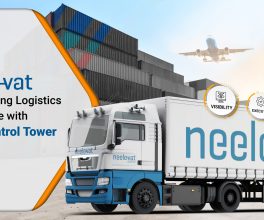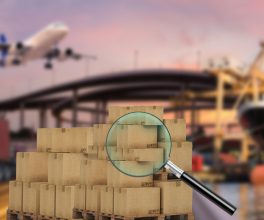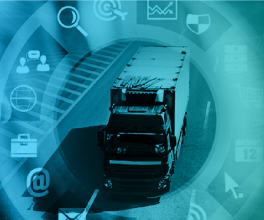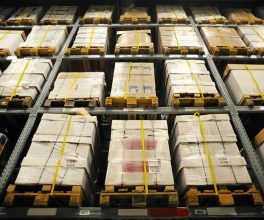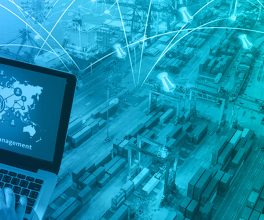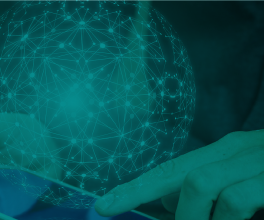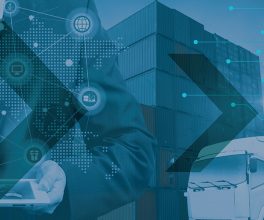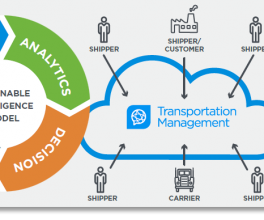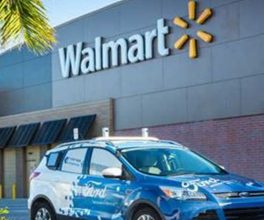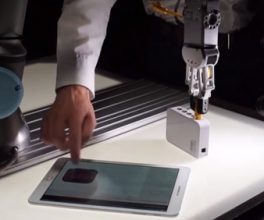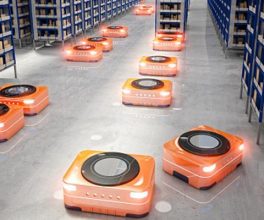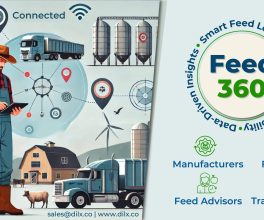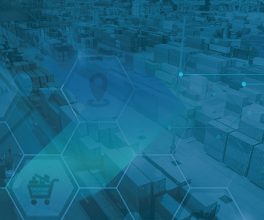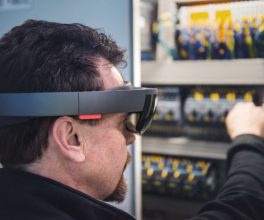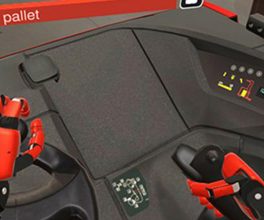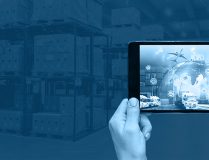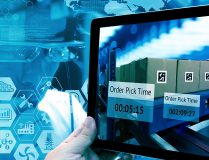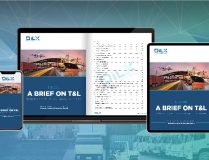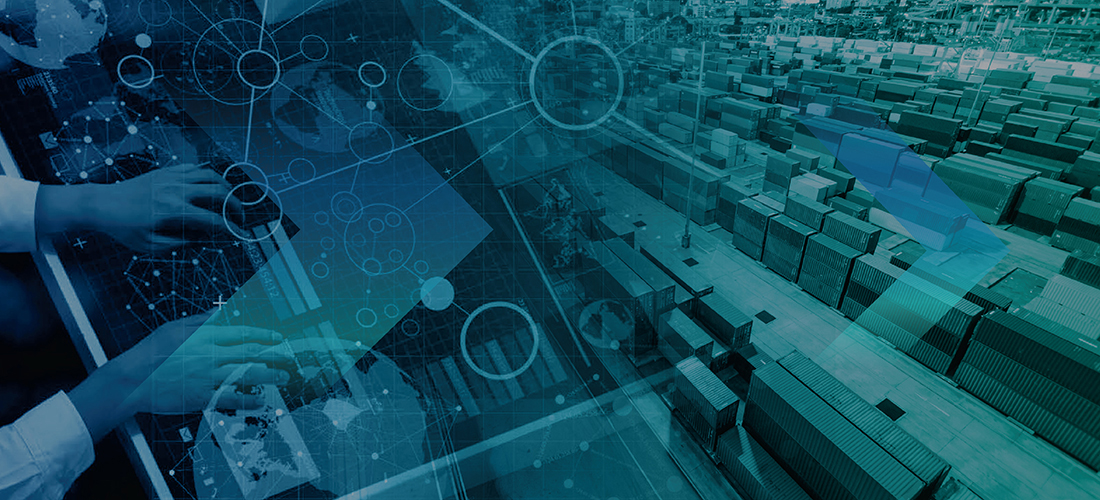The next-gen wireless technology will offer a new application landscape on a B2B & B2C scale, with near real-time connectivity. In the last decade, 4G has become the standard for many mobile consumers around the world.
Currently, fourth-generation wireless systems benefited the most yet in the aspect of new channels of data consumption, but it also has limitations. Over the upcoming era where connected devices usage will rise and it will require networks to transmit massive data in near real-time.
AT&T launched the earliest 5G deployment around the end of 2018 in 12 cities but the widespread implementation of the technology may take the next few years.
Tale of Wireless Technology Systems:

These systems were available as commercially to end-consumer from around late 1970s and early 1980s. The first generation (1G) of wireless technology systems came with the introduction of cell phones. These devices and networks allowed for mobile voice calls, but nothing more.

After modifications on later stage, 2G introduced for data transmission; but it wasn’t until 1998 that 3G allowed for media-rich applications like mobile internet browsing and video calling. The most recent iterations of 3G are able to reach data speeds up to 4 Mbps.

Current generation is known to all of us as 4G and it’s able to reach real-world speed depending upon the carrier network. As of now, the consumer is able to perform various task like – mobile online gaming, live stream HD-TV, group video conferencing, connected home solutions, and even emerging experiences like AR/VR.

Nowadays a very little price to pay for media-enabled wireless freedom but for downloading faces less buffering at 4G speed. In-case of industries like transportation or healthcare where latency is a most dangerous actor and if it can directly affect the outcomes. E.g. 5G will enable near-instant communication between autonomous vehicle communication that may prevent fatal accidents.
What is 5G wireless technology?
It’s the advanced wireless communication technology that delivers the faster speed of data compared to all the past generations. Early testing of this technology shows real-world speeds of 700 Mbps to 3 Gbps which consumers may experience once 5G becomes commercially available might be by 2024.

Generic use cases of 5G are Smartphones and other mobile devices but there are many other applications for this technology. E.g. IoT will benefit tremendously from the speed and bandwidth provided by 5G, especially as the industry grows.

Industry Disruptions due to 5G
A sudden rise in 5G connections creates tremendous opportunities for various industries but also sets the stage for widespread disruption. Industries such as transport & logistics, healthcare, manufacturing, and auto are already adopting technologies and becoming more connected.
Once 5G becomes in general, the effect on these industries could be transformative for the following:
- Speed: 5G networks will allow devices to download information 10 to 100 times faster than existing 4G services, enabling them to download extremely large files quickly.
- Capacity: 5G will have much wider bandwidth, allowing devices to upload and download multiple streams of complex data all at once.
- Latency: The interaction speeds across 5G are much quicker than existing networks. As a result, you will get a much faster response to anything that you do on a mobile device.
- Slicing: “Network slicing” means that mobile devices will be able to use multiple 5G networks simultaneously, greatly increasing the “density” of information. For example, one network could focus on location awareness, while another manages environmental monitoring.
This technology is all set to provide superior connectivity across networks and it’s important as the number of connected IoT devices arises, along with the amount of data they generate. 5G will enable faster data transfer speeds which generates a huge opportunity for many industries but also sets the stage for larger disruption.
 Let’s dive into several industries that could see a drastic impact from 5G technology below:
Let’s dive into several industries that could see a drastic impact from 5G technology below:
MANUFACTURING
5G could improve operations in the mfg. industry become more productive and efficient. This would enable manufacturers to augment the level of smart factories that leverage automation, AI, AR, and IoT.
With 5G, manufacturers benefited with a faster and more reliable in terms of data as well as a broader range of sensors and devices.
One major potential improvement with 5G will be AR for manufacturing. Ericsson began testing augmented reality troubleshooting in its Tallinn, Estonia factory in January 2018. With an AR app, engineers can observe a part that needs maintenance and pull up the instructions within their field of vision, drastically shortening the time it takes to complete the repair.
4G’s somehow lower response times and lesser reliability on Wi-Fi which makes limitation where 5G’s ability to transmit low latency video at a high resolution could potentially make it much more broadly usable.
As carriers continue to embrace 5G then more manufacturing use cases will come to light. Samsung and AT&T have partnered to create the United States’ first manufacturing-focused 5G “Innovation Zone” in Austin, Texas. This testing ground aims to demonstrate how 5G can impact manufacturing.
AUTOMOTIVE
Tesla, Google, and others have been racing for years to build the first viable autonomous vehicle capable of navigating all environments without the input of a human driver.
Their action to the problem was far used onboard computers and radar to scan the environment around the vehicle and decide a car’s next movement based on the information. Other companies, including Qualcomm, Ericsson, Huawei, and Nokia, are looking to 5G and edge computing as a potential solution to the problems faced by autonomous vehicles.
Their consortium, the 5G Automotive Association (5GAA), began work on cellular-vehicle-to-everything technology in 2016. Rather than cars determining individually how to act, in the C-V2X system, driverless vehicles communicate with one another and with parts of the physical environment like traffic lights and construction signs in order to coordinate movements safely and efficiently. The system is in a testing phase today, but researchers believe 5G could permit truly autonomous driving in the future.
5G availability would mean a favorable density of sensors in the environment and faster data transmission from centralized servers to the sensors and vehicles and as a result, faster improvement via machine learning algorithms. The average autonomous car of the future could produce as much as 2M gigabytes of data per week, and moving all of that data to the cloud or a region server is not possible today with Wi-Fi or 4G.
RETAIL
Over the last several years, retailers have invested millions in smart technologies to help customers shop more efficiently and check out faster while collecting more data on customer experience.
5G would be the potential to create entirely new doors of AR & VR shopping experiences that would be unthinkable with today’s technology. 5G’s low latency enables mobile AR/VR applications without the motion sickness some experience when using technology today. With 5G, it will be possible to try on an array of outfits virtually from the comfort of your home.

TRANSPORTATION & LOGISTICS
Connecting the way of transportation with 5G could change the way people and goods transit across the world. It could provide increased visibility over public transportation systems. Many logistics companies already use connected devices to track the shipment location using a combination of GPS and wireless connectivity. As 5G networks become more established, businesses will gain invaluable access to real-time E2E visibility into their transportation systems. With real-time location tracking, LSPs will gain the ability to:
- Gain live status updates to their customers
- Visibility of potential delays
- Use intelligence to optimize fleet routes
- Last-mile and ETA Forecast
These benefits will also help to increase location data, transport optimization, avoid delays and create ultimate customer experience. 5G enabled IoT devices can also be attached to individual shipments for identifying accurate location. This resulted in to achieve improve warehouse slotting, inventory management, and pick & pack operations. Also, tracking will enhance warehouse management with efficient inbound and outbound shipments orders.
Furthermore, Shipments can be environmentally monitored at the product level by dedicated IoT sensors. Subsequently, real-time information on measures like temperature, humidity, light levels, gas levels and any other areas that could impact the quality or safety of sensitive products. With more detailed product monitoring, LSPs will be able to:
- Ensure quality of food and other perishable items
- Help to manage the safety of products that could be compromised, like chemicals or raw materials
- Deliver intact items to the customer which they expect
5G could allow enhanced V2V communications, a key component to improving road safety in the emerging world of telematics & autonomous vehicles. It is essential that V2V communications take place in real time, as a matter of milliseconds could be the difference between a close call and a fatal collision. Achieving this high speed of interconnectivity requires vehicles to transmit large amounts of data between each other without any lags. 5G networks could make this possible with their low latency.
With the help of 5G, connected vehicles with infrastructure such as traffic lights, bus stops and the road can achieve seamless V2I communications which lead to improve traffic management, increase vehicle reaction time and make public transportation more efficient. Although truly autonomous vehicles are not common to see on the roads yet, it’s only a matter of time.
5G enabled AR application will be a new hype in warehousing market where users can see their environment with computer-generated imagery projected on top of it.
Examples of areas in which this technology can be useful include:
- Directions to slotting for storing & picking results in faster and easier storage, retrieval and distribution
- Remote operation of forklifts & picking devices
- Inter-equipment communications that allow robots and other automated machinery to optimize routing around a warehouse
LSPs have long wrestled with the Last-Mile Delivery where issue persists at how to maximize the speed and efficiency of getting goods from a local distribution center to their final destination. 5G can revolutionize last mile piece to bridge this gap, by supporting new technology like drone delivery. A remote pilot could fly a drone using video and haptic feedback; alternatively, drones may even become fully autonomous, with 5G supporting their sensors and communications.
SUPPLY CHAIN MANAGEMENT
Usage of 5G enabled IoT items could make ease of impact due to large amount of data in terms of location, temperature, pressure etc. which could be available to stakeholders in the supply chain in real time. Introducing 5G IoT sensors into supply chains could mean fewer losses due to manual inefficiency or misplaced shipments. As 5G technologies introduce more intelligent supply chain management, there could be potential for increases in production, streamlined logistical processes, and reduced costs.
TRADE FINANCE
5G IoT is seen addressing some age-old problems of trade finance, particularly in conjunction with the blockchain distributed ledger technology. In any trade, the parties involved must be able to determine with relative certainty whether certain conditions have been satisfied. A letter of credit, for example, is often honored only when accompanied by papers including the bill of lading. These manual processes and controls can be a cumbersome and fragmented process for lenders, sellers, and buyers. With 5G IoT and blockchain, a digital bill of lading could automatically transfer to the buyer when a ship reaches port, with the seller automatically receiving the purchase price.
5G ENABLED EDGE
Improved connectivity will deliver vast improvements to businesses looking to optimize their supply chains through automation. 5G will dramatically improve data collection and analysis at both the “near edge” (within a business facility) and the “far edge” (where an OEM IIoT device is deployed after the sale).
Transportation is also a key opportunity for supply chain teams to use edge computing to optimize their logistics decisions. Powered by a 5G network, businesses can host applications on small appliances and track critical data and adjust transit routes to deliver product more efficiently. In-transit data transmissions are a key challenge today for automated technology in the supply chain. With 5G connectivity, this ability will grow significantly stronger.
5G’s Hindrance
The explosion of 5G data will bring new challenges based upon frequency and amount of data can be collected. Then all the information may be available about every item on a truck.
Before implementing 5G and the increased data flow, logistics companies may need to empower their data infrastructure. Proper security and structures such as an operating data lake need to be in place before 5G starts to be adopted. A data lake is a centralized repository that stores data in an unstructured format that can then be used to run different types of analytics and dashboards.
Regardless of the risks, 5G would be a “truly innovative technology” with huge potential for B2B supply chains. Every enterprise just has to try it out once it’s available in-general and see if it works for them.
What’s next in 5G Race:
Megacorporations are building the future of connectivity like Nokia, Qualcomm, Ericsson, Broadcom, and Verizon all have discussed the implications of 5G as well as plans for technology and service deployment.

As several wireless carriers plan to offer 5G service in this year or the coming year, the entire telecom industry is at hard task to cope with this shift to higher radio wave frequencies:
- Qualcomm recently unveiled the Snapdragon 855 chipset, which grants smartphones 5G capabilities. The Snapdragon 855 rolled out in 2019.
- Verizon launched its first 5G HOME broadband internet networks in 4 cities during late 2018 and released 5G wireless services (limited) after its first 5G-ready phones hit the market in last couple of months
- AT&T rolled out 5G mobile hotspots in a dozen cities in 2018 and added few more in 2019
- Sprint and LG released the first 5G smartphone in the first half of 2019. Sprint have its 5G network in place in at least 9 cities
- Motorola unveiled its new 5G Moto Mod in 2018 “the mod” snaps onto the back of the Moto Z3 and turns it into a 5G-capable device. The 5G mod was available for purchase since a year now
This will affect the device structural design for sure, fortunately some prototypes currently exist but it may take some time before manufacturers can properly and aesthetically integrate with new 5G antennas into mobile devices. But with so many companies working to make the technology a reality, consumers should expect to have a range of 5G-enabled devices in the near future. Once all service providers activate 5G in multiple cities then compatible phones will soon follow.
While 5G service may be start to become more broadly available in the coming period, 4G will still remain the default service in areas outside of a select few densely populated cities. Widespread 5G coverage could take over a decade and as for the broader industrial applications of 5G, estimates suggest that adoption will take off in the early 2020s.
Preparing for the 5G Revolution
5G rises on a great pace, so data teams and supply chain teams can prepare by evaluating their operations to find out where their current data analytics & process automation operations are not performing up to the standard. Businesses can also closely examine their existing hardware expenditure to ensure supply chains are positioned to make the most of expected gains in connectivity. Supply chain managers should identify the aspects of their operations that are most in need of disruption, so that they can integrate 5G effectively in the years ahead.
Once technology will reach to general public, it will provide exact experience about how the lower latency and high speed will help everyone to realize the promise of many applications i.e. in IoT, VR, Robotics etc. New applications are also expected to emerge, and as with any technology, many will be hard to imagine until 5G is actually in the field. The supply chain is seen as a particularly strong candidate for 5G innovation.
Wait…. wait….It’s not over yet…. What about latest hype of this new decade in 2020s which could be a reality by next decade in 2030s – “6G”. Watch Now
At DiLX, we create a robust network for logistics innovative systems like tracking, transaction management, and e-capabilities. By connecting a global ecosystem of multi-modal carriers to manage every move, DiLX unites LSPs – from ocean to rail to the road to air – with first and last-mile drayage for the real-time events and tariff management.
Credits: ZDnet | Google Images | Ericsson | Intel | AT&T

